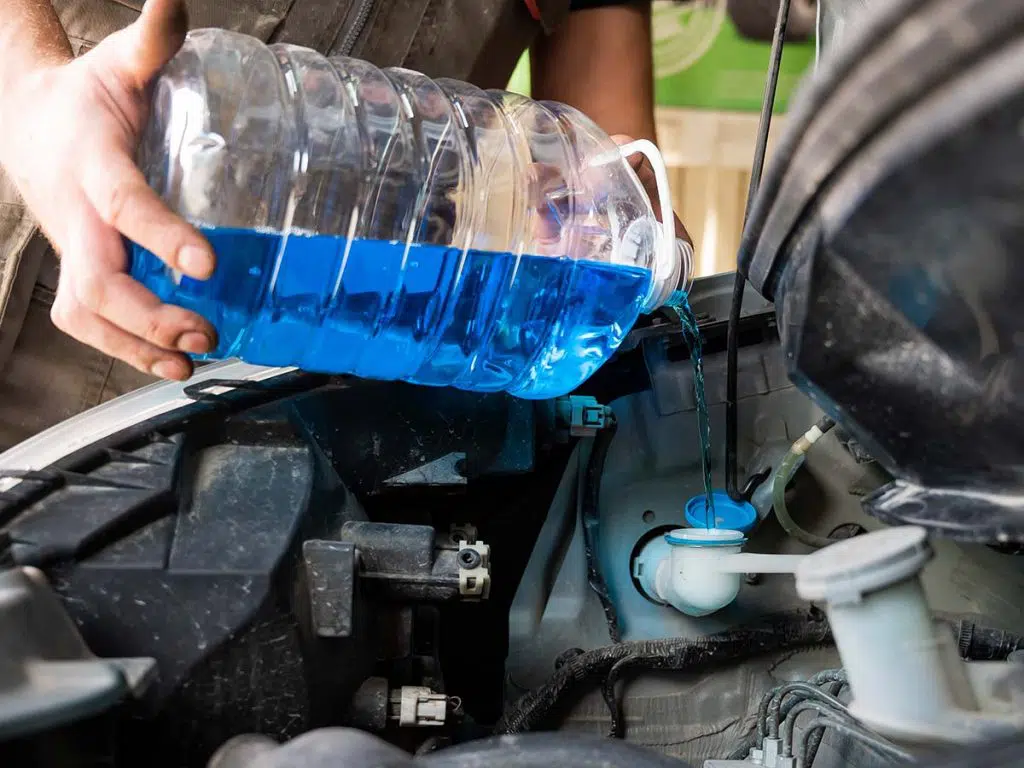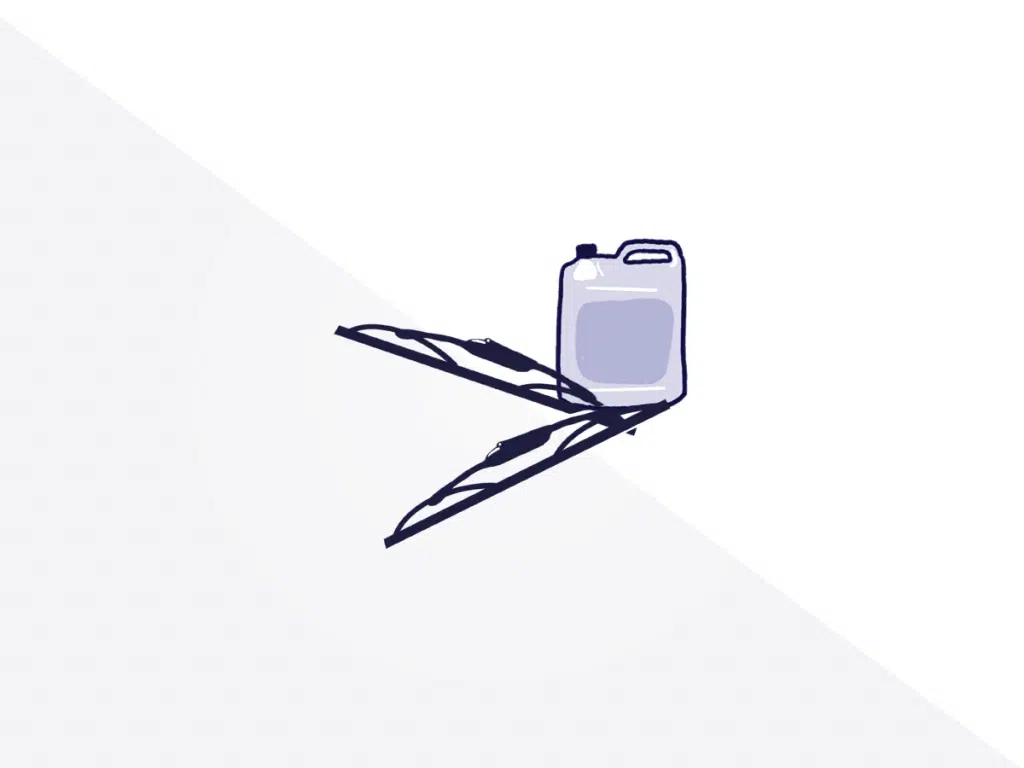Keeping your washer fluid full means you can always get a clean windshield.
If there’s only one fluid (besides fuel) that you refill yourself, it’s probably windshield washer fluid. This is what you spray on your windshield to keep it clean as you drive, and the easiest fluid to maintain on your own. Here’s everything you need to know about it.
How To Check the Windshield Washer Fluid

Many cars will light up a dashboard warning when your washer fluid is low. Not every car has this. To check, open your hood, and look for a black cap with this symbol on it:

This is your washer fluid. In some cars, you can simply look at the translucent reservoir and see how much fluid is left inside. (The fluid itself can be one of a few colors — more on this later.) Some cars, where the reservoir isn’t visible, have a dipstick you can use to check the level the same way as your oil or transmission fluid.
Symptoms of Low Fluid
The first sign of low fluid is a delay between when you start to spray fluid, and the fluid actually coming out onto your windshield. Air might have gotten into the hoses because there isn’t enough fluid left to keep the system topped off. This isn’t a problem, but it is a sign that you’ll be out of fluid soon.
When you run completely out of fluid, none will come out when you try to spray it. You’ll likely hear the electric pump whining a bit. Normally the fluid in the pump keeps it quiet. The good news is that running out of windshield washer fluid causes no damage to your car. Simply refill it, and keep on going.
How To Refill the Washer Fluid
Simply open your bottle of washer fluid and pour it into the reservoir with the washer fluid symbol on its cap. Fill it all the way to the top. Many cars have reservoirs that will hold a gallon of fluid, which is exactly how much comes in a bottle. Other cars may have smaller reservoirs, so be careful not to overfill. Splashed fluid won’t hurt anything, but you don’t want to waste it, either.
The next time you spray your windshield it will take a couple of seconds for the fluid to flow back into the system. Once it sprays, you’re good to go.
What Kind of Washer Fluid to Use
Most of us are already familiar with the standard blue washer fluid, but there are other types available as well that may enhance performance in various conditions. Any of these fluids are safe to use in any car, so choose whichever type fits your needs. Sometimes fluids fit more than one of these categories.
Standard Blue
This is the most common type of washer fluid. It’s blue, like Windex, which makes sense because you use both for cleaning glass. There’s nothing special about it, but it does the job. It’s the least expensive type of windshield washer fluid, and the most common type to find.
Winter
If you drive in cold weather, you may have had your washer fluid freeze. Since roads are often dirty in winter, this disables your washer system right when you need it most. To winterize your vehicle and your wiper blades, you can buy winter washer fluid which includes a form of antifreeze. This not only prevents it from freezing in the reservoir, but also from freezing on the windshield immediately after you spray it.
Winter washer fluid is usually orange, so it’s easy to find. It’s more expensive than standard blue fluid and provides no additional benefit in temperatures above freezing. I’ve typically run winter fluid until temperatures are consistently above freezing in the morning, then switched to standard blue the next time I run out.
Summer
Nobody likes bug splats on their windshield. Not only are they gross, but they also interfere with visibility, which can be a safety hazard. Sometimes standard blue washer fluid isn’t strong enough to wash this mess off your windshield during that summer road trip.
This is where summer washer fluid comes in. Typically green in color, it contains special additives designed to break down bug guts and wash them out of your way. If you live in an area with lots of insects, this may be well worth using, even if it costs a little bit more. Summer fluid is just as susceptible to freezing as standard blue fluid. If you live somewhere without many insects, the standard blue fluid should be just fine for summer.
Water Beading
Many driving enthusiasts enjoy the benefits of RainX or similar products on their windshields. This is essentially a type of wax suitable for glass. Some washer fluids include such an additive that makes treating your windshield as easy as spraying it with fluid. The end result is that water drops slide right off your windshield as you drive, particularly at higher speeds. You won’t need to use your wipers as much, extending the life of your wiper blades.
Conclusion
Although there’s more to know about windshield washer fluid than just pouring the blue stuff in, it’s one of the easiest things you can do to maintain your car yourself. Choose the best fluid to fit your needs, top it off, and you’re good to go! Don’t forget to use the FIXD Sensor and app to keep track of your windshield wipers and other maintenance items and monitor car health to stay road-ready 24/7!

Recovering autocross and track day enthusiast. Once turned a VW Jetta into a pickup truck. Lives in a van down by the river. Dream car: 2001 Subaru WRC rally car.














